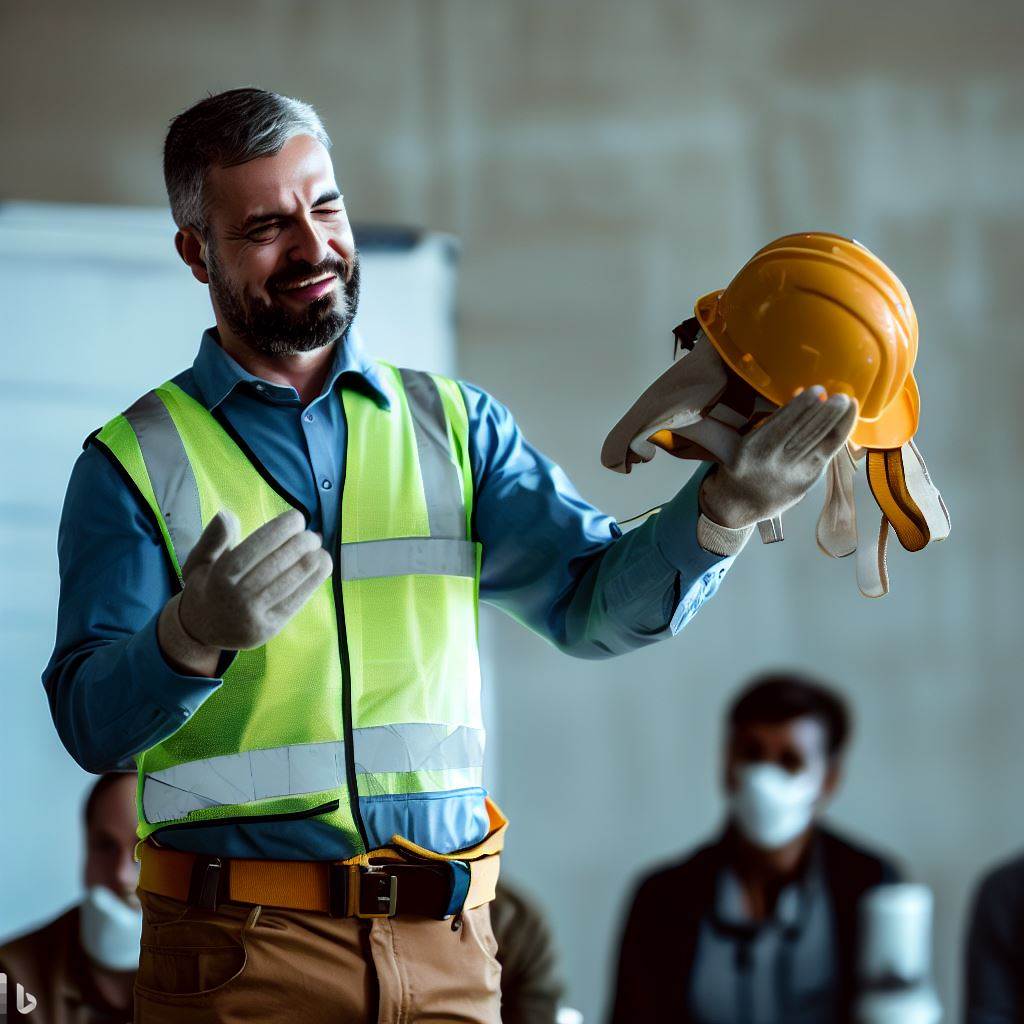PPE Training
Personal Protective Equipment (PPE) Training
Personal Protective Equipment (PPE) is a critical component of workplace safety, providing a physical barrier between workers and various hazards in the industrial sector. However, simply providing PPE is not enough to ensure its effectiveness. Proper training on the selection, use, maintenance, and limitations of PPE is essential to maximize its protective capabilities and safeguard the well-being of workers.
Understanding the Significance of PPE Training
PPE training holds great importance for several reasons:
PPE training helps workers identify workplace hazards and understand the specific types of PPE required for protection. By recognizing potential risks, employees can choose appropriate PPE that matches the identified hazards.
2. Proper Selection & Fit
Effective PPE training educates workers on selecting the right type and size of PPE to ensure a proper fit. Ill-fitting or incorrectly chosen PPE may compromise its effectiveness, leaving workers vulnerable to injury or illness.
3. Proper use & Maintenance
Training emphasizes the correct usage and maintenance of PPE, including donning and doffing procedures, cleaning protocols, storage guidelines, and regular inspections. This knowledge ensures that PPE remains in good condition and performs as intended.
4. Understanding Limitations
PPE training provides insights into the limitations of different types of protective equipment. Workers learn when additional safety measures may be required, such as engineering controls or administrative controls, to supplement the use of PPE effectively.
Key Elements of PPE Training
Comprehensive PPE training should cover the following key elements:
1. PPE Selection.
Training educates workers on how to assess workplace hazards and select the appropriate PPE based on the nature of the hazards and the tasks being performed. This includes understanding the different types of PPE available and their specific uses.
2. Proper Fit & Use
Workers are trained on how to properly wear, adjust, and use PPE to ensure a secure and comfortable fit. They learn about the importance of maintaining a good seal and avoiding any interference with their ability to perform tasks safely.
3. Maintenance & Inspection
Training covers the proper care, cleaning, and maintenance of PPE. Workers learn how to inspect PPE for any signs of damage or wear and understand when to replace or repair it.
4. Limitations & Restrictions
Employees are educated on the limitations of PPE and situations where additional safety measures or alternative control methods may be necessary. This promotes a comprehensive understanding of the role of PPE in conjunction with other safety measures.
5. Emergency Response
PPE training includes guidance on emergency response procedures, such as handling PPE during rescue operations or evacuations. Workers learn how to safely remove and dispose of contaminated PPE after exposure to hazardous substances.
Benefits of PPE Training
Proper PPE training offers numerous benefits to both employees and organizations:
1. Enhanced Workers Safety
PPE training ensures that workers understand how to properly select, use, and maintain their personal protective equipment. This knowledge helps to reduce the risk of workplace injuries and illnesses by providing effective protection against various hazards, such as physical, chemical, and biological agents.
2. Compliance with Regulations
Many industries are subject to regulations and standards that mandate the use of PPE in specific work environments. Proper PPE training ensures compliance with these regulations, helping organizations avoid penalties and legal consequences.
3. Risk Reduction
PPE training raises workers’ awareness of workplace hazards and the importance of using appropriate protective equipment. It enables them to identify potential risks and take proactive measures to minimize exposure, contributing to a safer work environment.
4. Improved Productivity
When workers are equipped with the necessary knowledge and skills to use PPE correctly, they can work confidently and efficiently. Reduced risk of injuries or illnesses means fewer work interruptions, absenteeism, and medical costs, ultimately leading to improved productivity.
5. Empowered Workforce
PPE training empowers workers by providing them with the tools and knowledge to protect themselves. This fosters a sense of personal responsibility for safety, enhancing worker morale and engagement.
6. Cost Savings
Effective PPE training can lead to significant cost savings for organizations. Fewer workplace injuries and illnesses result in reduced medical expenses, insurance premiums, workers’ compensation claims, and potential legal liabilities.
7. Reputation & Image
Implementing comprehensive PPE training programs demonstrates an organization’s commitment to worker safety, enhancing its reputation and image both internally and externally.
Conclusion
Overall, PPE training in the industry plays a crucial role in safeguarding workers, ensuring regulatory compliance, reducing risks, improving productivity, and fostering a culture of safety within the organization.
EHS CIRCLE INDIA is the Top Safety Consultant or consultancy in Delhi, NCR & India who provides PPE (Personal Protective Equipment) training through competent trainers in Pan India.
Contact us for further enquiry

